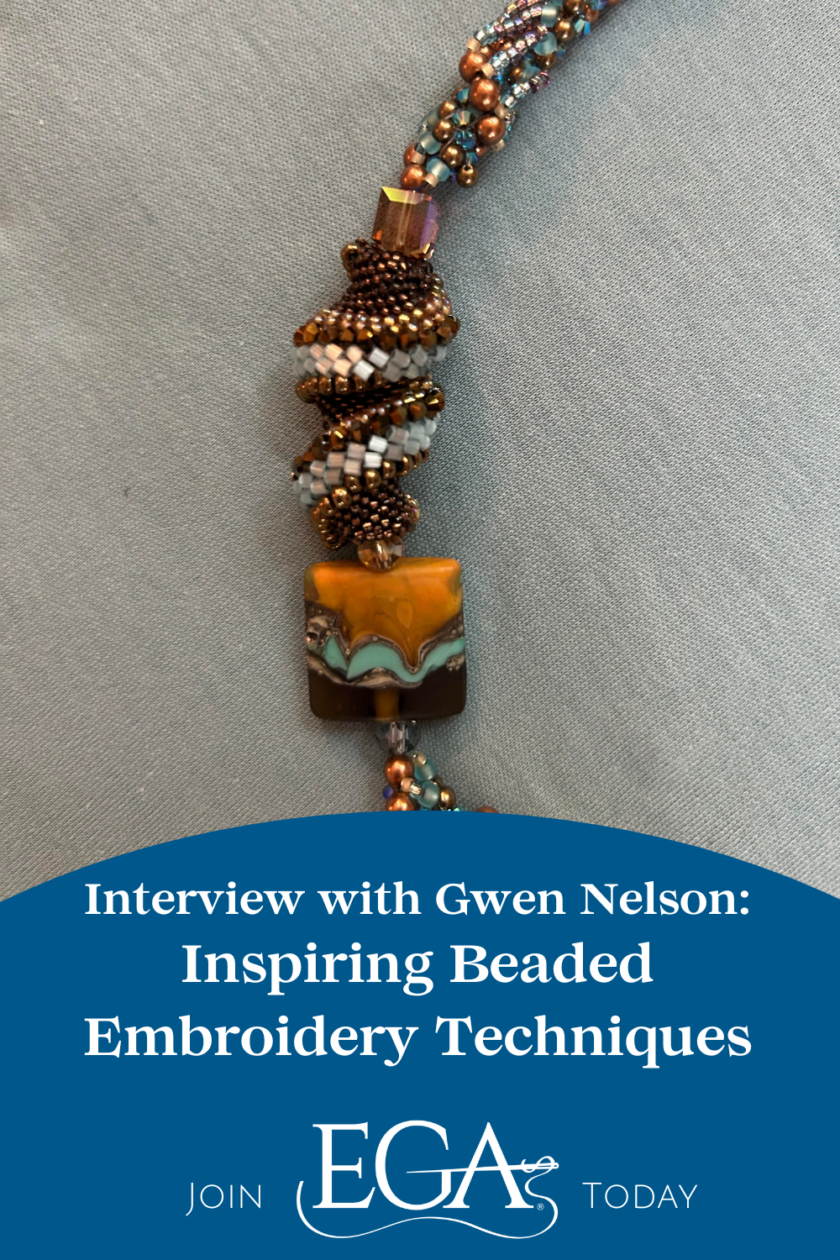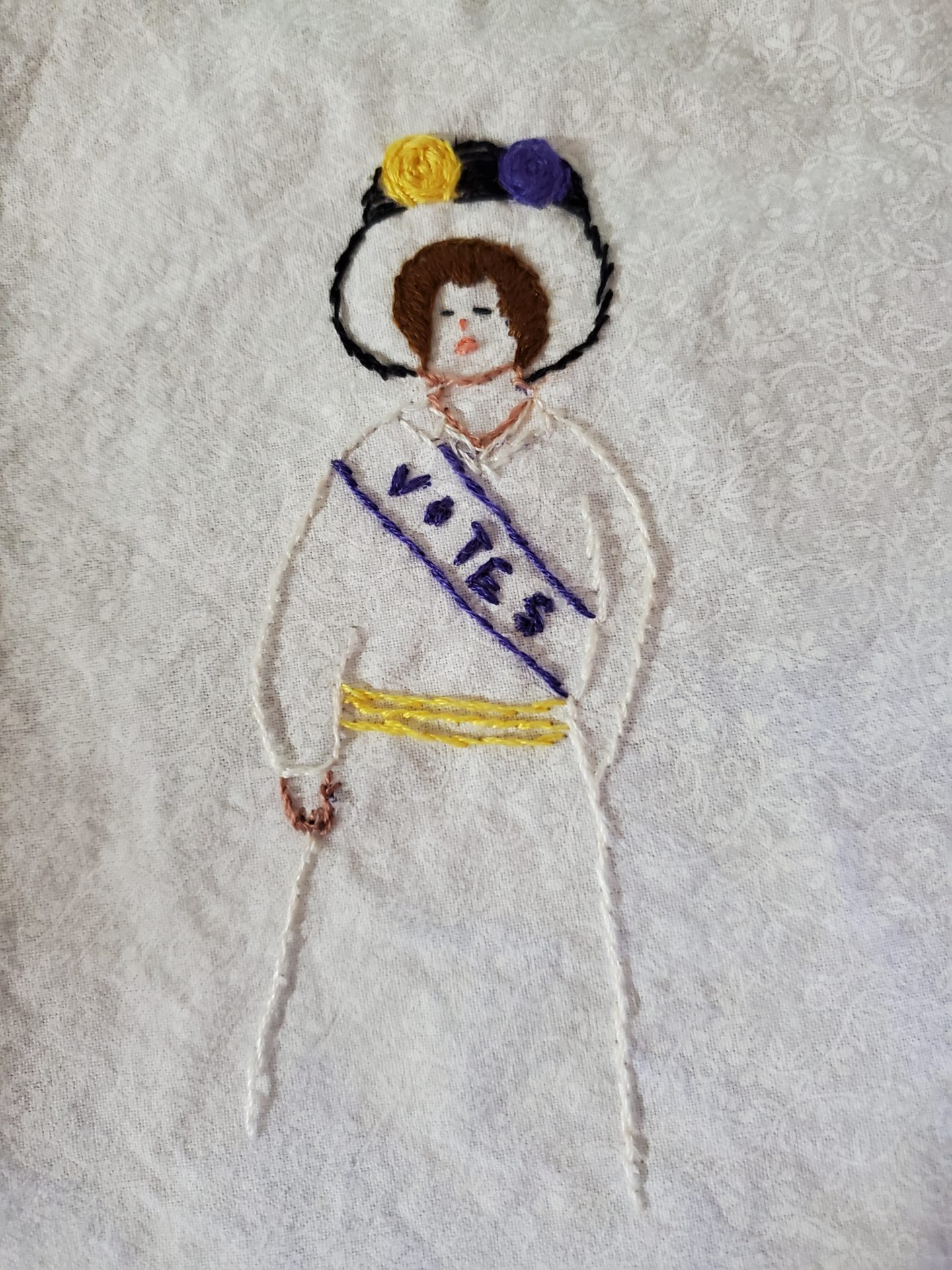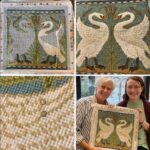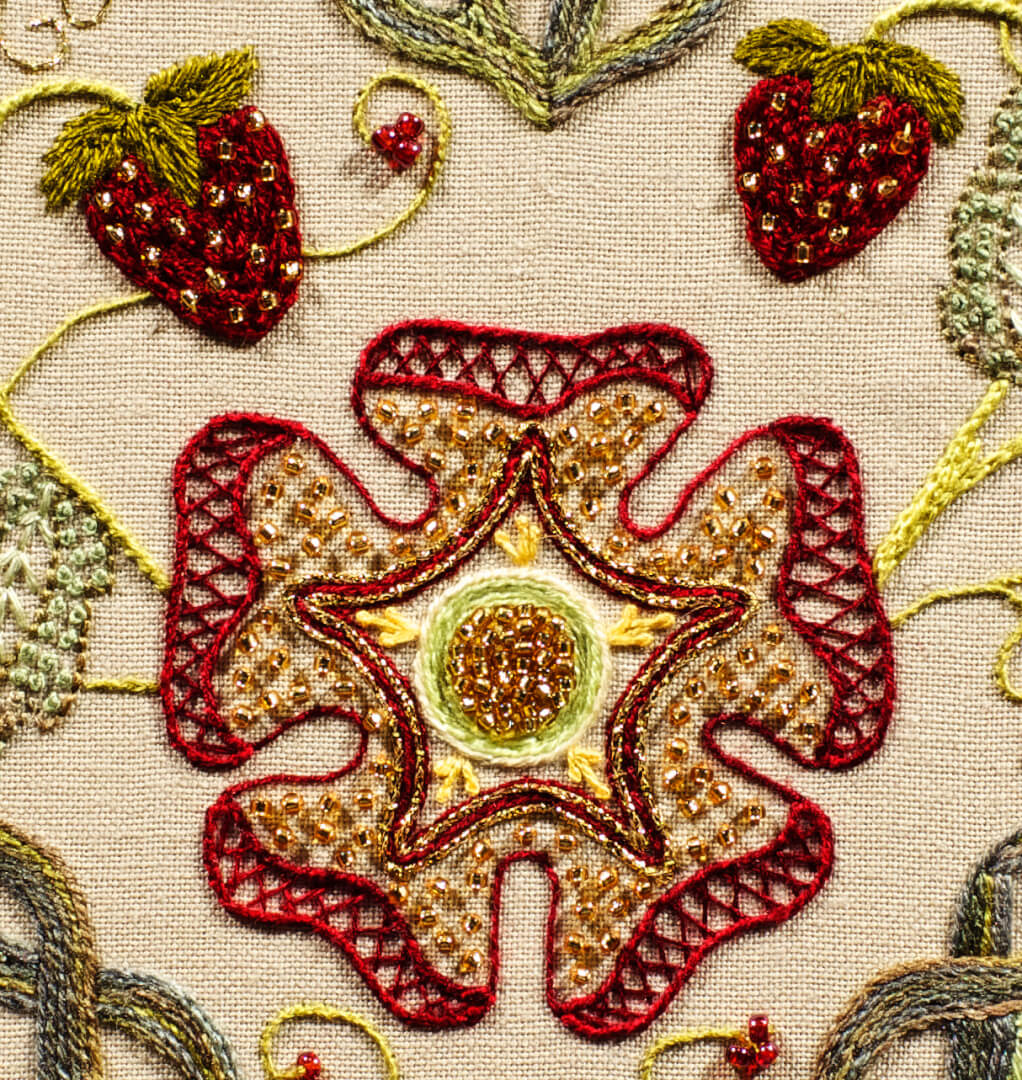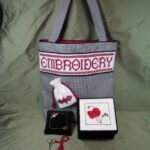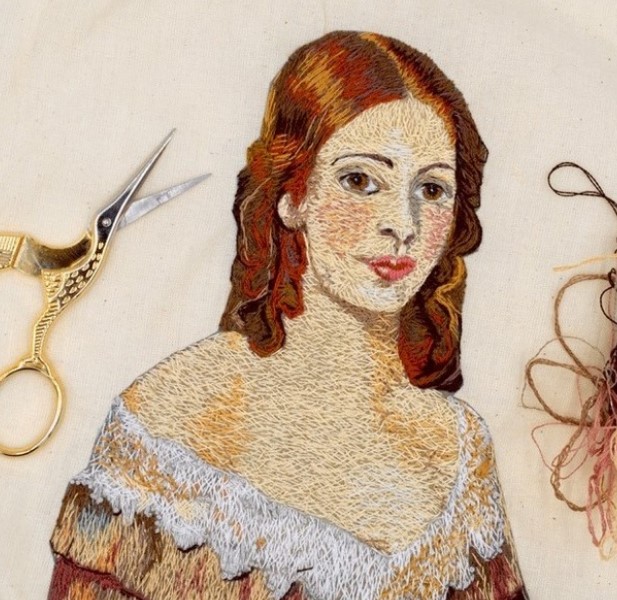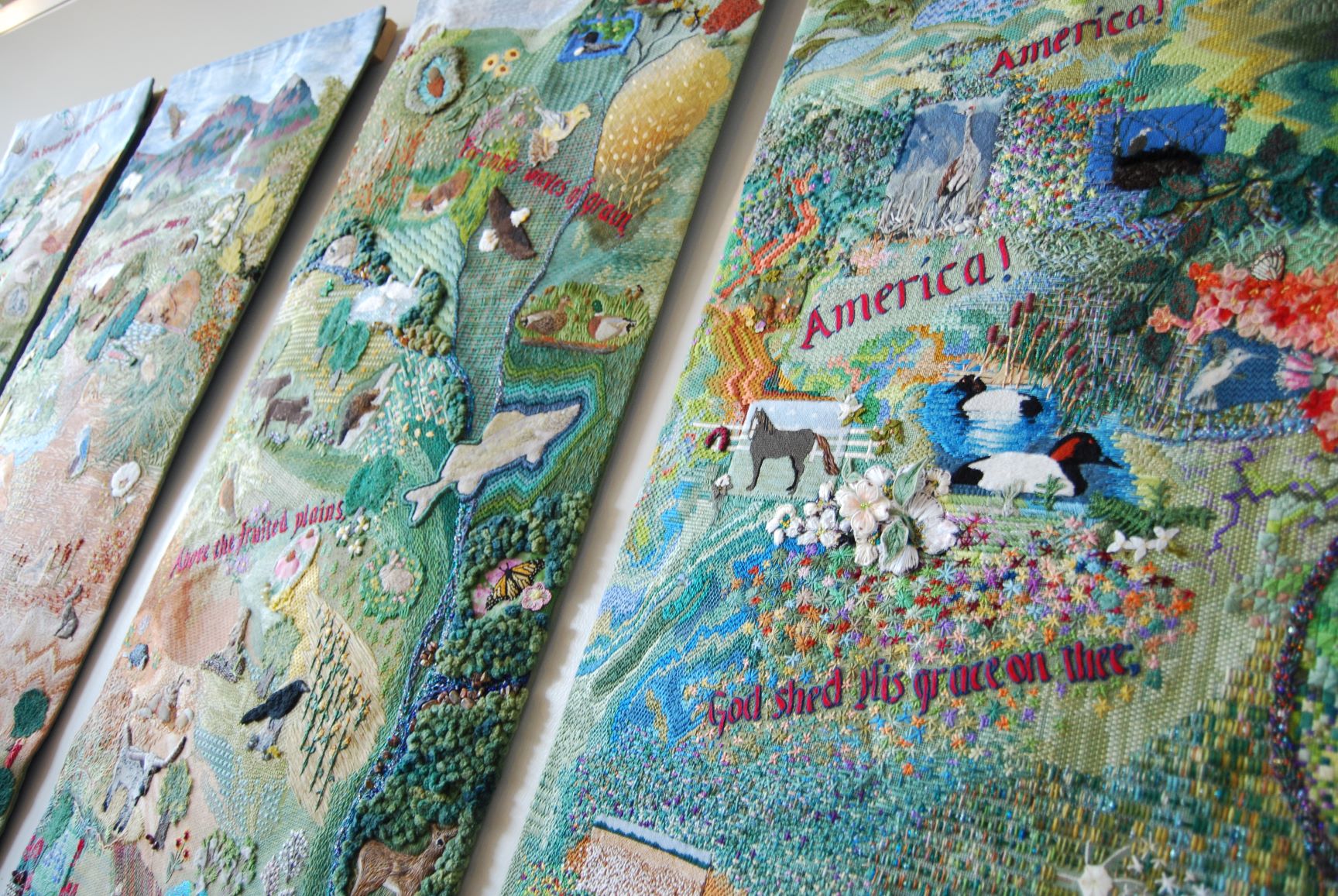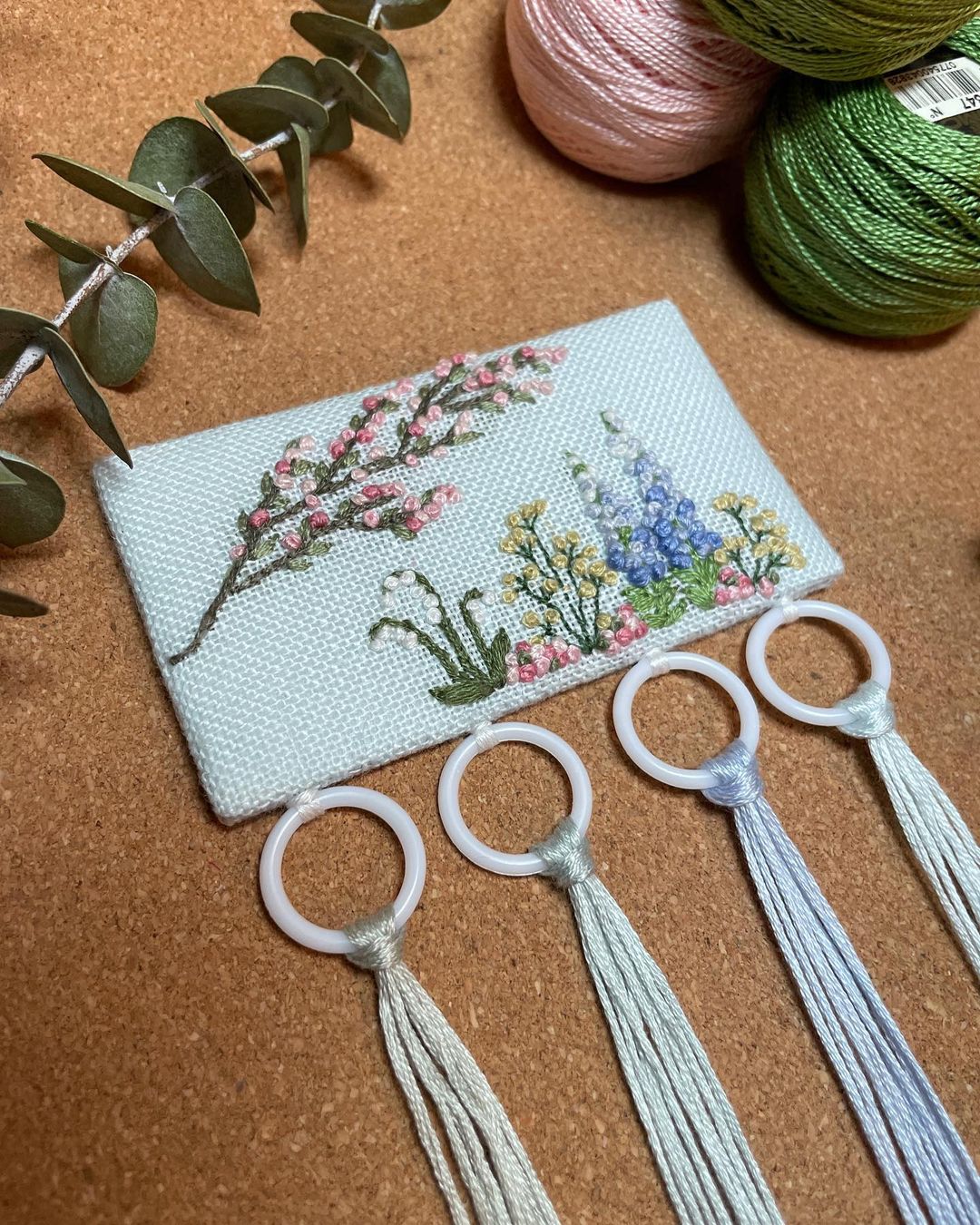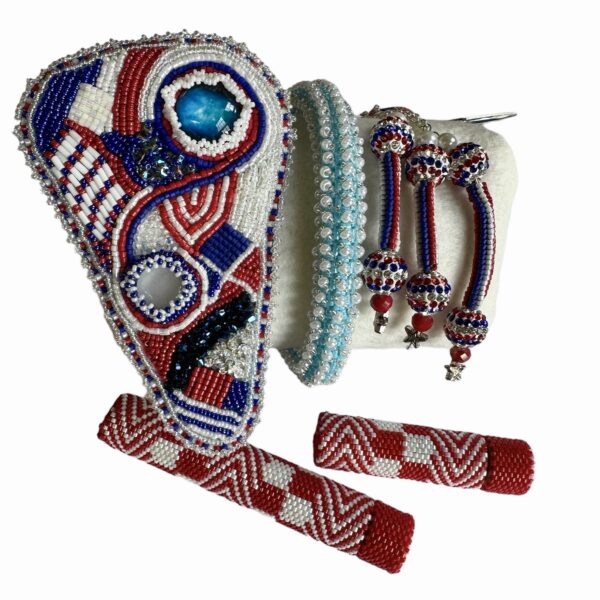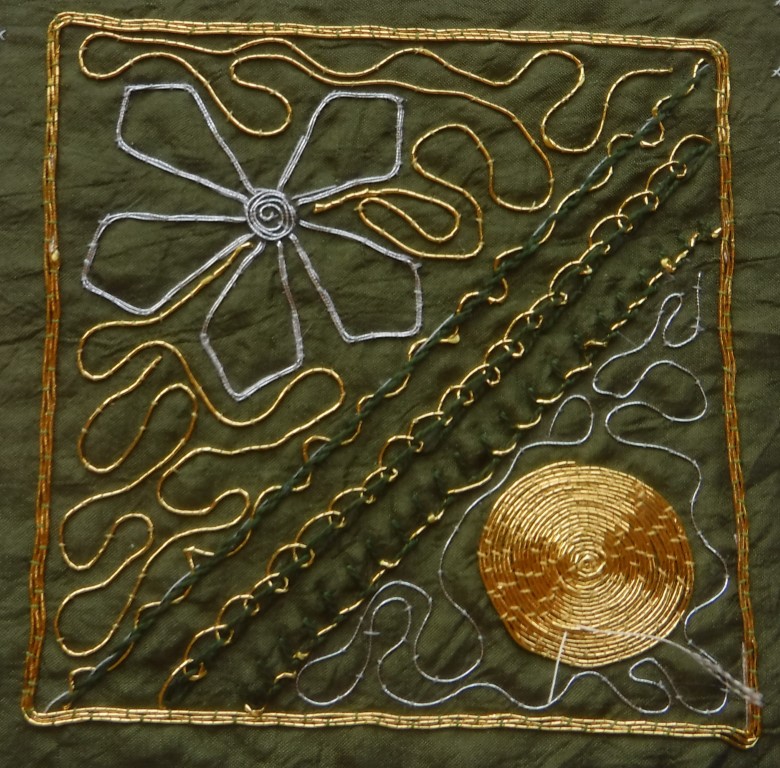Gwen Nelson has been a member of the Embroiderers’ Guild of America since 1997 (Louisville Chapter) and served as Tennessee Valley Region Director for four years, chaired two region seminars, taught at regional and national levels for EGA, and has served as the EGA National president. Gwen knows all the ins and outs of EGA! She also holds a lot of valuable knowledge about beading, and has taught and designed beaded projects for almost 25 years. Her latest correspondence course Baby Steps is a wonderful class for both practiced and beginning beaders as it explores the five different techniques included in EGA’s Master Craftsman Program in Beading. Her correspondence course Keeping in Shape where you make a necklace with 13 three-dimensional beaded pieces is available as a GCC Lightning Round through August 31, 2024. We sat down with Gwen to learn more about her love of beading, how she approaches a new design, and more!
Where did your love of beading begin?
I am not sure when I started beading. I was a member of EGA at the time the EGA Board decided that beading could be added to our list of embroidery techniques, because the beading that members were doing included the “threaded needle.”
We have many wonderful, talented members of our EGA chapter and one of those members taught a class in beading. I had already had someone outside of EGA teach me how to make a necklace using an easy spiral technique, but this teacher taught us how to bead a needle keeper and a scissor case. That was my first introduction to the Peyote stitch. Following that, I learned how to bead an amulet bag. By this time, I was hooked and started designing my own beading projects or embellishing patterns that I found.
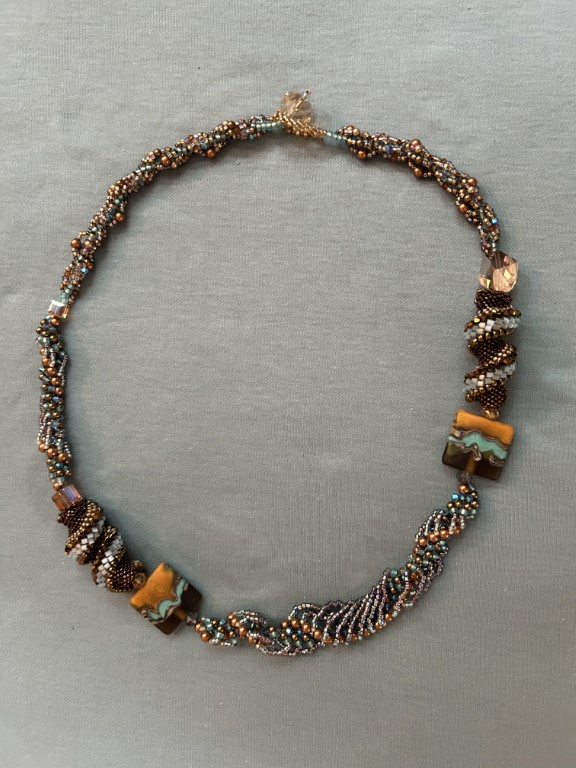
Where do you find inspiration?
Funny, I don’t know that I have any certain area where I find inspiration. A lot of the items I make are linked to my love of mathematics. For example, the first GCC I wrote, Keeping in Shape, is all based on geometric figures.
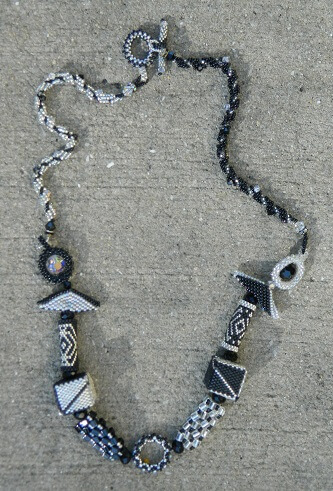
In addition, I have a beaded embroidered bracelet that I named, Where is My Isosceles. There are at least 7 isosceles triangles in this bracelet. When I stitched this bracelet, I started from both ends to the middle. Ironically, when I came to the center of the bracelet, I wasn’t sure how to finish it. While pondering the issue, I happened to look down at the sandals I was wearing; and, lo and behold, I saw a beaded design that I knew would work perfectly.
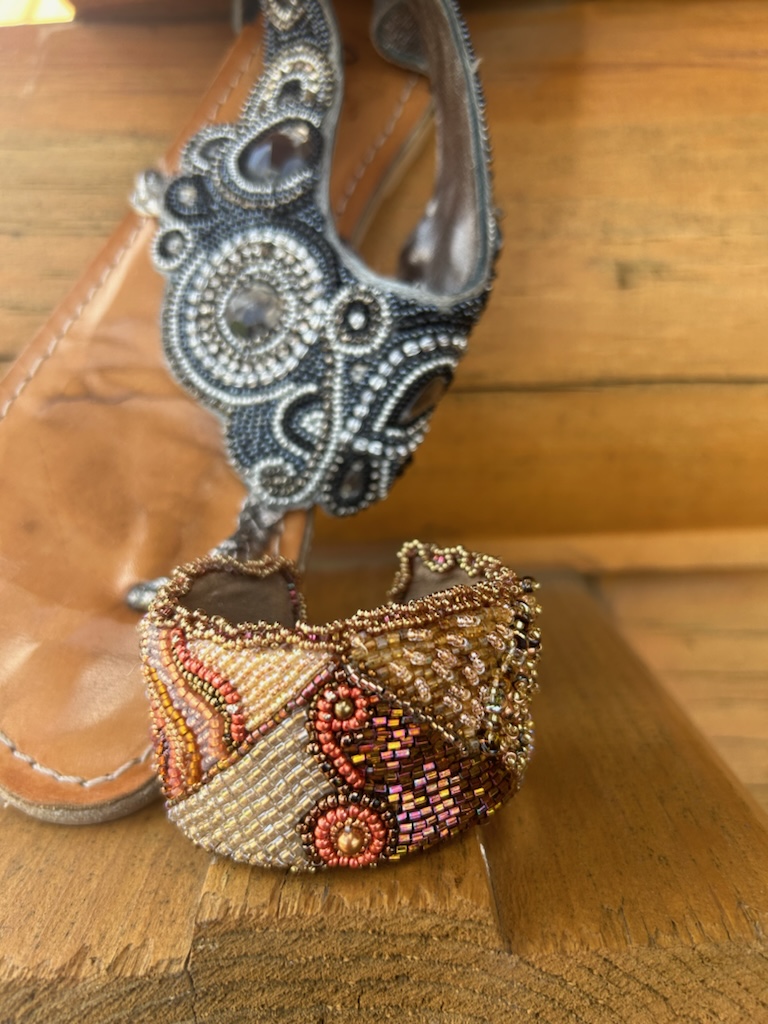
What does your design process look like?
I don’t know if I have a design process. I will see something and think, that would make a beautiful beaded piece. I usually sketch what I saw or dreamed up in my head and then try to find the beads and the technique to make my vision. Sometimes it works great, sometimes it needs a few alterations, and sometimes it doesn’t work at all. I guess that’s the challenge you face when you try to create something on your own, but I love doing that.
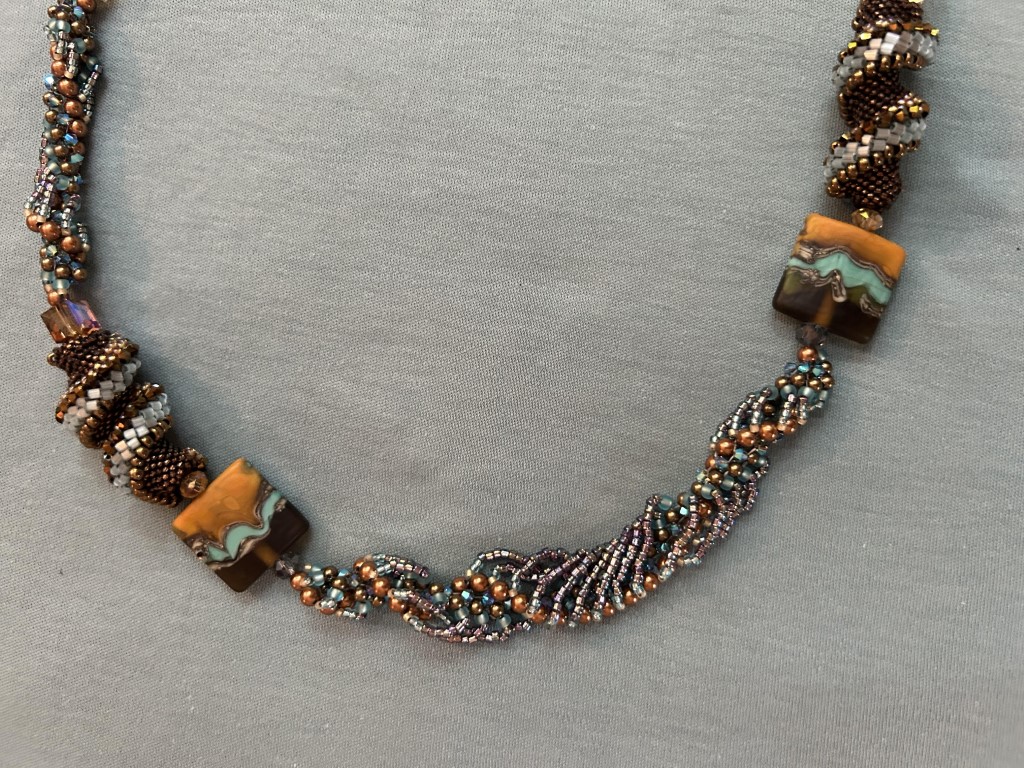
Do you have a favorite design that really showcases your aesthetic?
I don’t think I have a favorite design that represents who I am as an artist. I like too many things to try to hone in on one technique or piece. I guess I would best be known by Keeping in Shape since it has been a GCC for some time, but I don’t think it defines me nor my art.
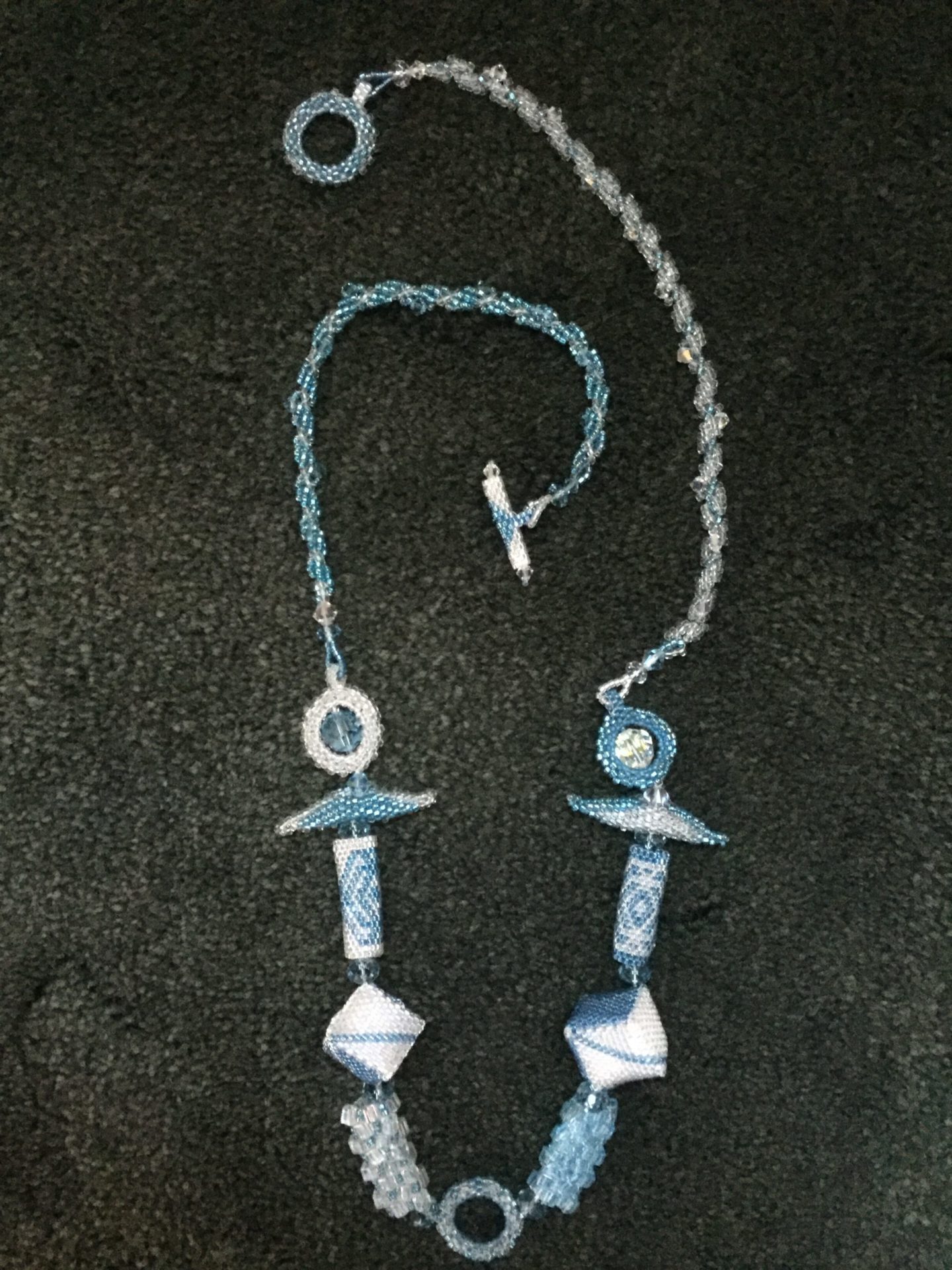
Do you have a favorite style of bead or favorite beading technique? Why is it your favorite?
Again, I don’t really have a certain bead that I just have to use or a favorite beading technique. When I decide on something I want to design, neither of those weigh in on the bead I am going to use or the technique. It seems like the design tells me: these are the beads you should use or the color you should use or the technique.
For example, the GCC that is being released now was something I decided I wanted to do because of the small pair of red, white, and blue scissors that I bought at a national seminar. When I purchased those scissors, my first thought was what I would do with this pair. Like most stitchers, I have a tremendous number of small embroidery scissors; however, when I looked at this pair, it told me what I was going to do.

I was going to make a scissor fob and scissor case for the scissors, and I would do this with red, white, and blue beads. Then I thought about the beading techniques I would use. I knew I would probably use Peyote and probably Herringbone. They are easy and I wasn’t planning on anything fancy for a pair of scissors. Then I thought of the square stitch. It is a stitch that I don’t use often. Since I am chair of the MC in Beading, it occurred to me that I had selected three of the fundamental techniques that are used in the MC program. All I lacked was the right angle weave stitch. I decided I would make an RAW bracelet. I knew the bracelet didn’t really go with the theme of a pair of scissors, a fob, a scissor case, and a needle case; but then I decided that every beader ought to have a beaded RAW bracelet.
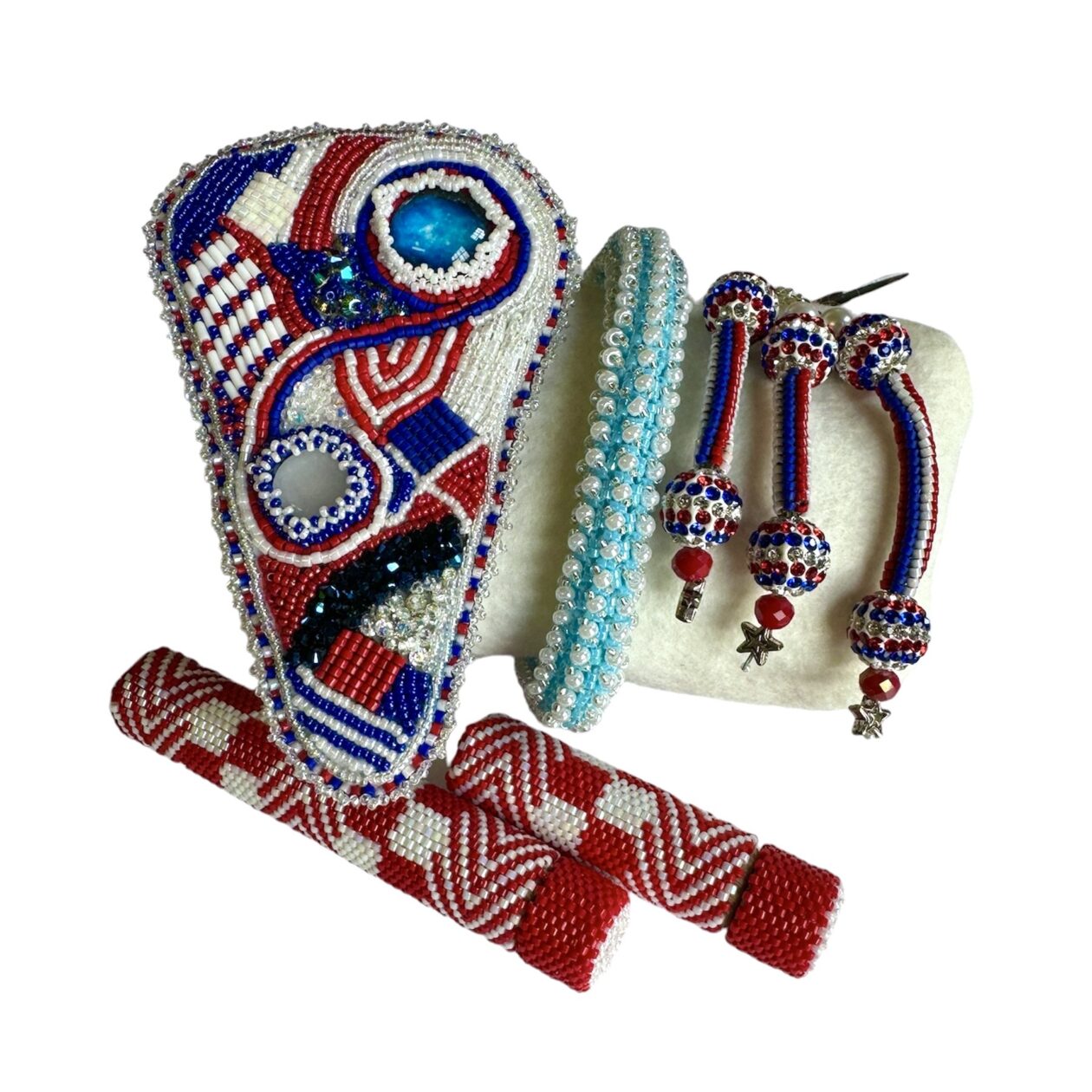
Do you have any favorite tools you can’t live without?
Lots of needles (because they bend often when I try to use them in a design that has lots of curves), Fireline thread, scissors, and my special beading glasses.
Do you have a daily/weekly practice that you’d recommend to other embroiderers interested in honing their craft?
Don’t I wish!!! My life is way too busy to have a certain time I can sit down and just bead. My recommendation would be: Be happy when you find that hour or so to just bead!
What crafting or color trends (if any) are you drawn to right now?
I really like all colors. I especially loved the Swarovski beads and really miss them. Their brilliance could really pop a necklace or any piece of jewelry. Now I try to find other beads to replace the crystals we don’t have or design pieces that do not need crystals.
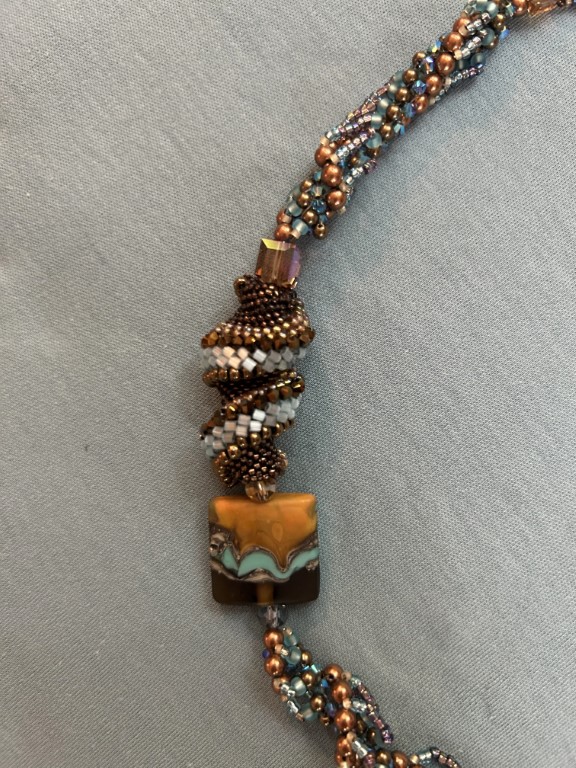
What should interested EGA members know before taking your Baby Steps course? What do you hope stitchers take from Baby Steps?
First, the pieces are truly beginning pieces. They are meant to relax you when you stitch because if you already know the technique, you will have fun with its easiness. If you are not familiar with the techniques, I am hoping the booklet is written so you can follow the directions easily and learn a new technique.
Second, I hope that once the student takes the GCC, the student will want to look at other designs that may use the same techniques but are a little different than what is in the GCC. For example, there are many different Peyote techniques.
Third, I hope that some may decide to go beyond what they learn in the GCC and maybe extend their knowledge enough to enroll in the Master Craftsman for Beading Program.

What is your favorite piece of advice about beading?
You have to be willing to take out any mistakes, even if you have to start over. The beads can be costly and you want your piece to be as perfect as possible. Also, whenever you wear or show a piece you beaded, wear or share the piece with pride because you created a piece of art.
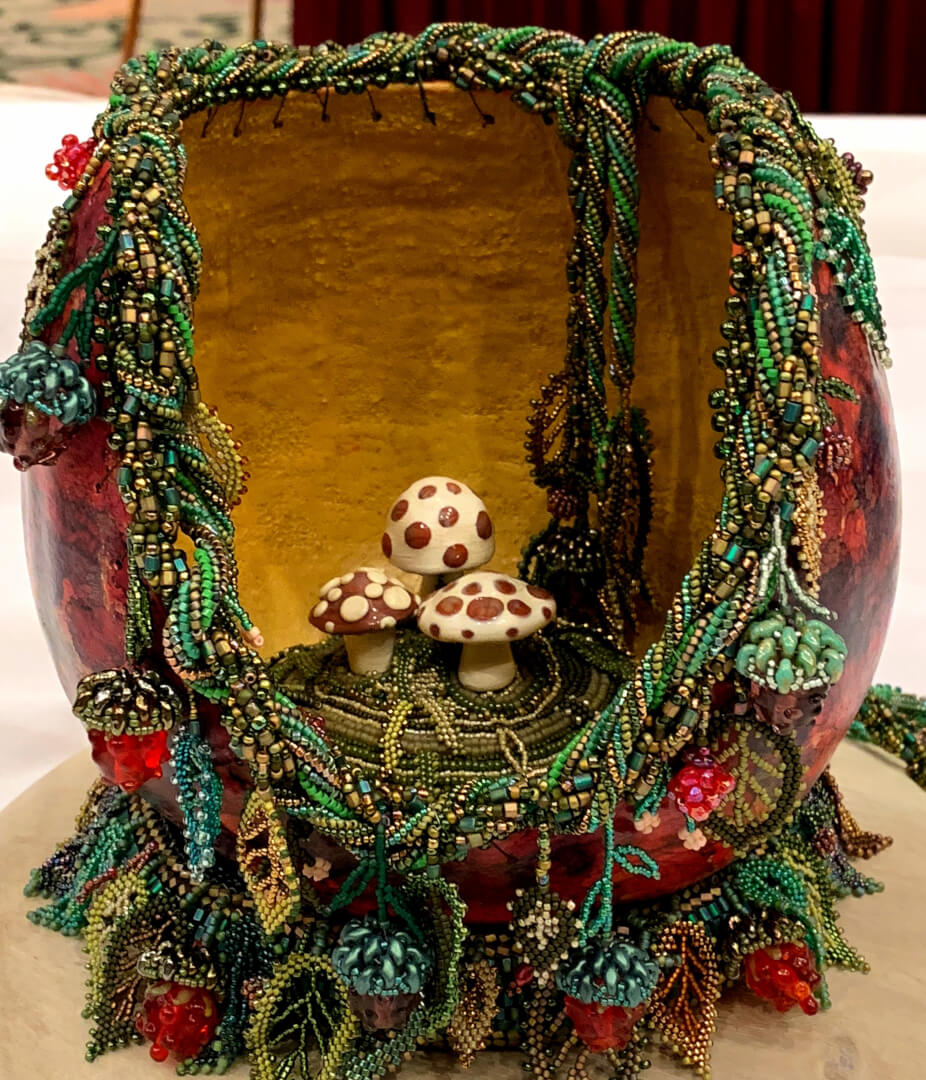
Where can interested needleworkers discover more of your work and upcoming projects and events?
I am writing a Petite Project right now. It should be ready soon. It is four different patterns for Holiday earrings. They all use the Peyote technique and are relatively easy. Other than that, I do teach many of my pieces.
Thank you to Gwen for sharing this insight into her artistic process! Interested EGA stitchers can register for Keeping in Shape available as a GCC Lightning Round through August 31, 2024. Groups can register for Baby Steps with Gwen Nelson right now as a Group Correspondence Course! More information about our Group Correspondence Courses including registration forms and more can be found here.
